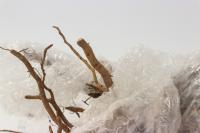1、 Curing method
1. Soil: Schisandra chinensis is suitable to grow in deep, loose and breathable soil. When preparing soil, wood debris, garden soil and some rotten leaf soil can be mixed and prepared. This soil is very suitable for its growth
2. Illumination: it has no excessive requirements for illumination. As long as it is not exposed to strong light, it is better to have better illumination conditions. It can't accept the strong radiation and exposure of direct light. In summer, it needs to be temporarily transferred to a cooler place to avoid being exposed to the hot sun

3. Temperature: it will grow better in the environment of 25-28 ℃. It is better not to exceed 35 ℃ in summer. It can grow normally even in the environment of zero degrees. When the temperature is lower than 0 ℃ in winter, try to move it indoors for maintenance
4. Moisture: it has high requirements for water. It can be watered every day in spring and summer, and once every three days in autumn and winter. In rainy days, shelter or drain after the rain to avoid ponding

2、 Breeding skills
1. Reproduction: in spring, the plant will germinate. Cut off the new buds and insert them into the seedbed at a certain distance. It's good to plant in autumn. Pay attention to keep the temperature at about 27 ℃
2. Pruning: it is suitable for pruning in summer. It will have dense and complicated branches and leaves, so it should be properly dense, so that they can avoid interfering with each other's growth

3、 Diagnosis and treatment problems
1. Insect pests: it will be attacked by leaf curlers, which will rot and drop leaves and fruits. The pest leaves should be cut off in time, cleaned, and sprayed with Isocarbophos
2. Disease: it will be affected by leaf blight, and spots will appear on the leaves. The diseased leaves should be cut off, and the ventilation should be strengthened. In addition, multi bacteria medicine should be used for prevention and control

4、 Other issues
1. Whether it can blossom: it can blossom and bear fruit. The flowering period is between May and June. Some fertilizer should be applied to make it bloom more fully
2. Whether it can be planted at home: it can be planted at home, but it should be raised in a place with good outdoor lighting conditions. It has strong cold resistance and is very beautiful. You can watch its flowers


 jackfruit
jackfruit snake plant
snake plant hibiscus
hibiscus hydrangea
hydrangea lavender
lavender Green roses climb al...
Green roses climb al... If you don't pay att...
If you don't pay att... Management of four g...
Management of four g...

































